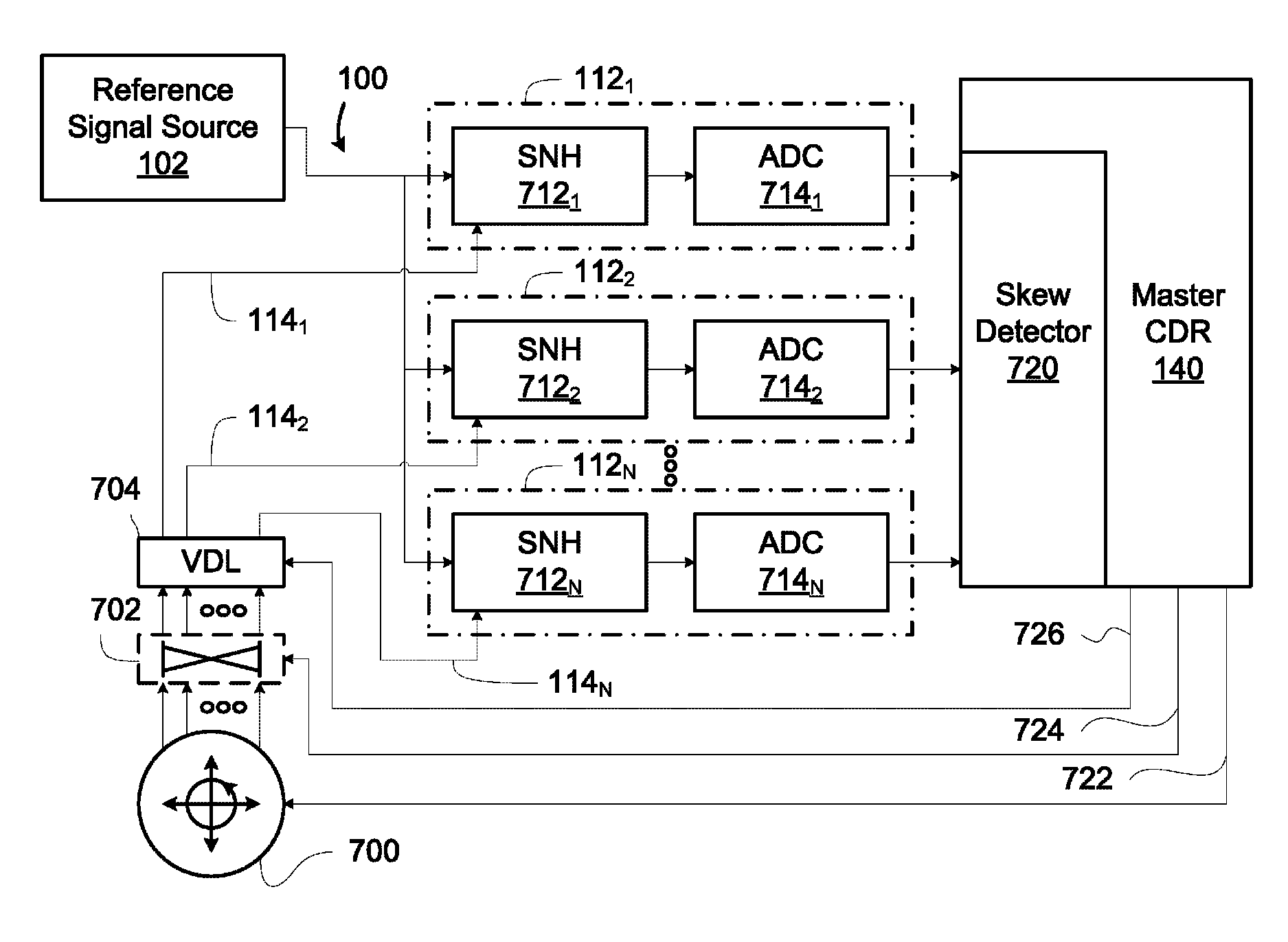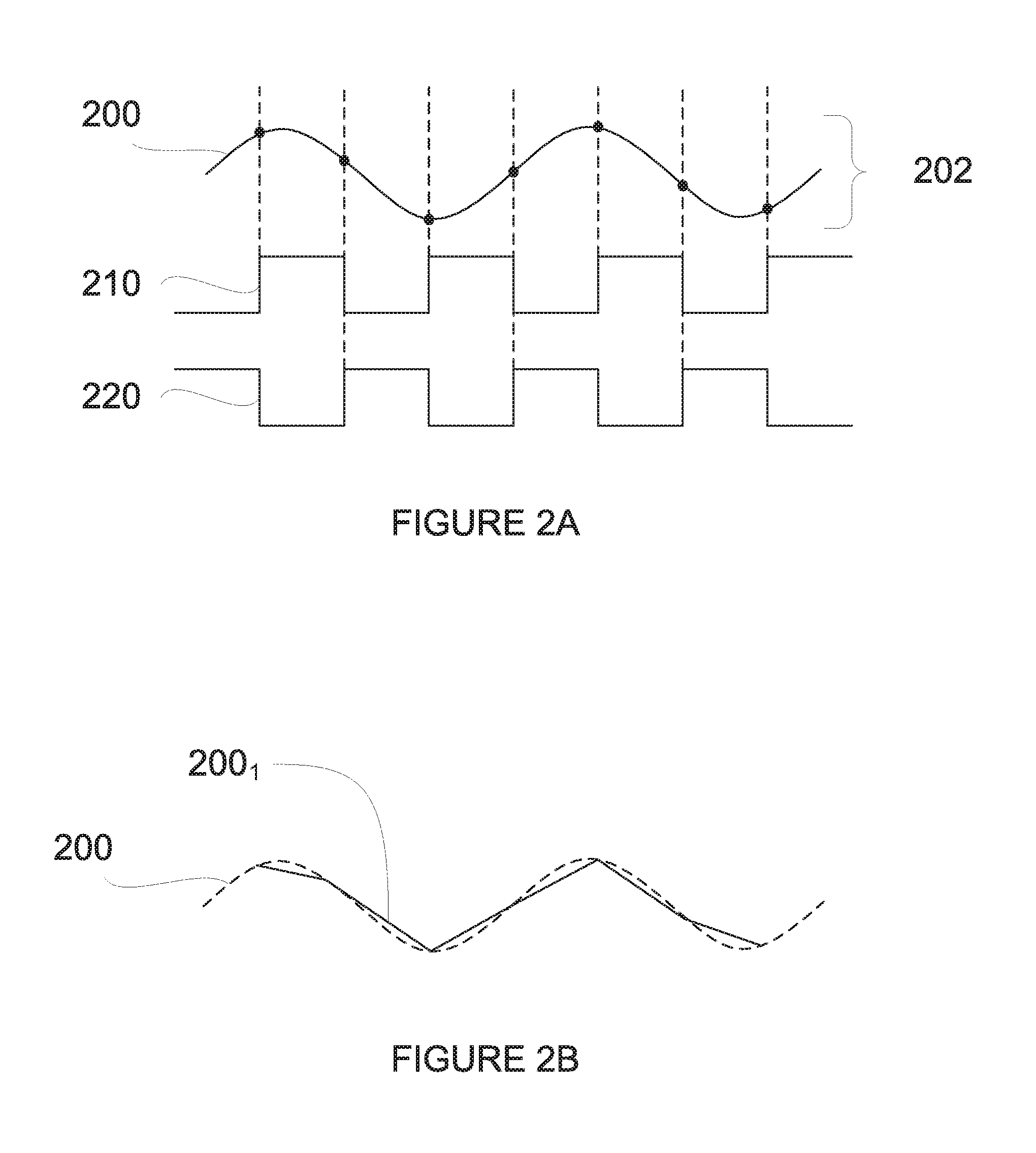Skew detection and correction in time-interleaved analog-to-digital converters
a technology of analog-to-digital converters and time-interleaved converters, applied in the field of electronic circuits, can solve problems such as difficult implementation in dense multi-channel transceiver applications, clock skews, and inability to use techniques in situations where reference signals are presen
- Summary
- Abstract
- Description
- Claims
- Application Information
AI Technical Summary
Benefits of technology
Problems solved by technology
Method used
Image
Examples
Embodiment Construction
[0041]In digital circuits, skew is a problem which affects the synchronous transfer of signals and information across components. Clock skew is a particular type of skew which arises when a common clock is used to set the pace of operation of a plurality of circuit components. If a propagation time of the common clock to the plurality of components varies, the components may not function properly, which may lead to data instability, hold violations, and setup violations, among other issues.
[0042]With reference to FIG. 1, clock skew can be particularly problematic to circuits tasked with sampling analog signals, for example time-interleaved analog-to-digital converters (TIADCs). An example TIADC 100 comprises a plurality of channels 1121-112N each provided with a respective clock 1141-114N, and a master clock and data recovery unit (“master CDR”) 140. The TIADC 100 receives a reference signal from a reference signal source 102. The reference signal is routed to the plurality of chann...
PUM
 Login to View More
Login to View More Abstract
Description
Claims
Application Information
 Login to View More
Login to View More - R&D
- Intellectual Property
- Life Sciences
- Materials
- Tech Scout
- Unparalleled Data Quality
- Higher Quality Content
- 60% Fewer Hallucinations
Browse by: Latest US Patents, China's latest patents, Technical Efficacy Thesaurus, Application Domain, Technology Topic, Popular Technical Reports.
© 2025 PatSnap. All rights reserved.Legal|Privacy policy|Modern Slavery Act Transparency Statement|Sitemap|About US| Contact US: help@patsnap.com



